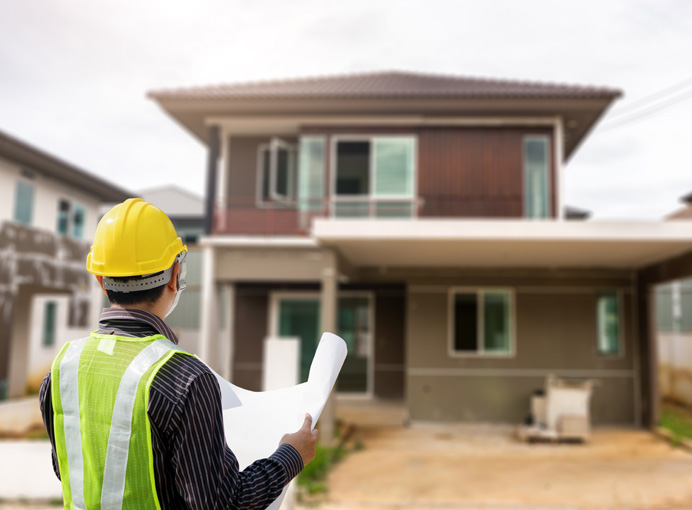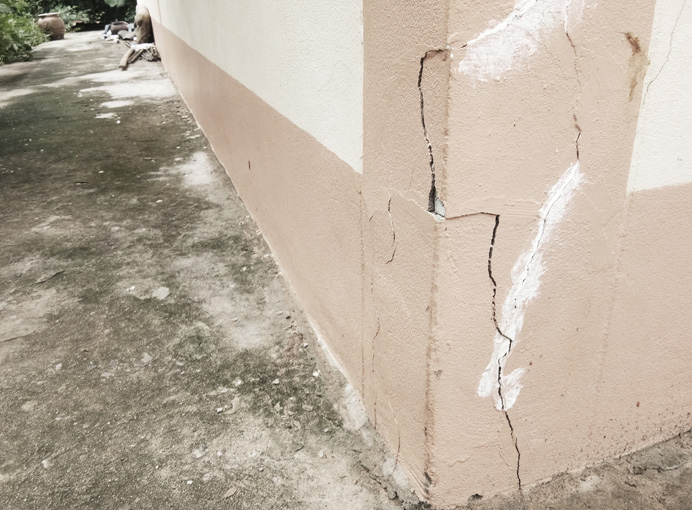Unlike some other building inspections in the market, our building inspections include Timber Pest better known as ‘Termite Inspections’.
The Building and Termite Pest Inspection combo, identify the presence of termites and other pests, as well as highlighting conditions conducive to future activity. Due to the devastating damage termites can cause, these reports are considered vital in most parts of Australia.
If major defects or termite activity are found, our reports provide the information you need to assess the property and your offer better– saving you stress and potential financial loss – or assist in decisions regarding corrective action that should be taken.
Why get a Building Inspection?
The purpose of a building inspection is to warn you about any significant damage to the building such as structural damage or major defects that could impact on the property's structural integrity and potential works to be carried out by a professional. An experienced building inspector will have the knowledge needed to find the most common building defects and faults and give advice on the significance of the fault, rectification options.
However, it’s important to seek additional advice from a relevant professional, such as an electrician, engineer, plumber or carpenter, to further determine the severity of any defect found as well as the cost to correct it. In some extreme cases, an underlying issue could potentially end up costing the property buyer thousands of dollars to rectify.
The Inspection Process: What's involved?
The building inspection process starts with an inspector visiting the property in question and conducting a thorough inspection of all accessible parts of the property to look for any underlying issues and damage.
Here is a list of packages we offer.

Essential
- All internal and external mirror and major cracks
- Roof/Subfloor structural inspection
- External Roof
- Steel lintel
- All internal and external mirror and major cracks
- Roof/Subfloor structural inspection
- External Roof
- Steel lintel
Premier – Most Popular
- All internal and external mirror and major cracks
- Roof/Subfloor Structural Inspection
- Tap Leaks
- Roof Gutters
- External Roof
- Downpipes
- Window and Door Lintel
- Kitchen Cabinets and Benchtop Conditions
- External Cladding
- Patios attached to House
- Stand alone External wooden/steel structure
- Chimney
- Stairs
- Garage
- Pathway
- Driveway
- Timber/Pest/Termite Inspection
Significant Items Relating to Building Inspections & Property Inspection Reports
The definitions of the significant items identified in each report are detailed as follows:
- Safety Hazards: any major defect that is an urgent safety hazard to occupants.
- Major Defect: defects that require rectification, works to avoid the development of unsafe conditions.
- Minor Defect: commonly identified in most properties including cracking to walls and ceilings, corrosion of materials and general deterioration.
Recommendations may also be given, when applicable for further specialist inspections, by suitably qualified inspectors for specific aspects of the building e.g: plumber, structural engineer, electrician etc. Where cracking has occurred to masonry walls, the damage is categorized as per Australian Standard AS 2870: Residential slabs and footings requirements. This standard describes typical damage and assigns a damage category based on the crack width. This category will then determine the required remedial works. The damage is categorised from 0 – Negligible to 4 – Severe. Crack width limits are increased by 50% for easily repaired plasterboard partitions.
PPI Building & Pest Inspections reports are always presented with a clear and comprehensive approach, along with evidenced-based conclusions detailing the property's overall condition.

Cracking to Masonry Walls – What is Considered Defective During a Building Inspection?
Cracking of a building element is a structural defect, where in the opinion of the inspector, the present or expected consequence of the cracking is that the structural performance of the building element is impaired, or where the cracking is the result of the structural behaviour of the building. Unfortunately, cracking of walls and ceilings is quite common. There are many benefits of having a full brick home (masonry external & internal walls) however, cracking is not one of them!
Masonry walls provide a rigid structure without much flexibility. When slight movement occurs to the slab, or environmental conditions (heat/cold) occur, cracking of the internal walls can be the result. Cracking to the cornice, commonly known as cornice cracking, is also commonly identified.
However, this even occurs in newly built homes! Typically, which is caused by fiction/movement at the cornice/plaster wall junction between these dissimilar materials. Many builders are now dry lining the internal walls with plasterboard instead of render. This allows for the plasterboard walls and ceiling to be of the same material, thus minimizing cracking.
Please get in touch with us to arrange an inspection.

